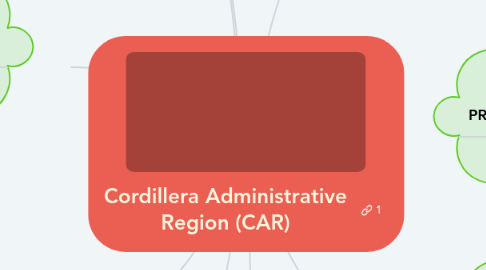Cordillera Administrative Region (CAR)
作者:Marc Jason S. Santos

1. HISTORY
1.1. On July 15, 1987, President Corazon C. Aquino issued Executive Order 220 which created the Cordillera Administrative Region. The provinces of Abra, Benguet and Mountain Province (of the Ilocos Region), and Ifugao and Kalinga-Apayao (of the Cagayan Valley) were annexed as part of the newly created region. Nueva Viscaya was not included in the region despite having an Igorot majority at the time.
2. RELIGION
2.1. Roman Catholic is the single largest denomination in this region. However unlike most other provinces and regions of the Philippines, they only form a plurality in the region forming 60%-70% of the population while Protestants specifically Anglicans and Evangelicals have a very strong presence that forms 20%-30% of the population.[31][32]. Other religions such as traitional Animism have a significant presence in the region and it's mainly practiced by tribal people.
3. LANGUAGES
3.1. Balangao, spoken in Natonin, Mountain Province. Bontoc, spoken in Bontoc, Mountain Province. Ibaloi, spoken in Benguet. Ifugao, spoken in Ifugao. Ilocano, spoken in Apayao, Abra, Kalinga, Mountain Province, Benguet, and Ifugao. It is the regional lingua franca. Isnag, spoken in Apayao. Itneg, spoken in Abra. Kalinga, spoken in Kalinga. Kalanguya, spoken in some parts of Benguet. Kankanaey, spoken in western Mountain Province and some parts of Benguet.
4. TOURISM
4.1. The Banaue Rice Terraces is among the sites visited by tourists in the region which is situated in the province of Ifugao. The terraces, ancient sprawling man-made structures from 2,000 to 6,000 years old, are a UNESCO World Heritage Site, and are part of the Rice Terraces of the Philippine Cordilleras. The Philippine Eagle and the Crested-Serpent Eagle was also found in the Last forest frontier of the North the Province of Apayao. Other natural attractions of the region include the Sumaguing Cave in Sagada and the mummy caves of Benguet and Mountain Province. There are four national parks: Cassamata Hill, Mount Data, Balbalasang-Balbalan, located in the province of Kalinga, and Mount Pulag, the highest mountain in Luzon at 2,922 metres (9,587 ft) above sea level. Kalinga also offers white water rafting along the Chico River. The city of Baguio, dubbed the "summer capital of the Philippines", is a major tourist destination in the region.
5. GEOGRAPHY
5.1. Cordillera Administrative Region is the only landlocked region in the Philippines, bounded on the northeast and east by the Cagayan Valley, and on the southwest and west by the Ilocos Region. The region is primarily mountainous, situated within the Cordillera Central mountain range. Mount Pulag, the highest mountain in Luzon, is located at the tri-point of Benguet, Ifugao, and Nueva Vizcaya provinces.
6. ABOUT
6.1. Cordillera Administrative Region (Ilokano: Rehion/Deppaar Administratibo ti Kordiliera; Filipino: Rehiyong Pampangasiwaan ng Cordillera), designated as CAR, is an administrative region in the Philippines situated within the island of Luzon. The only landlocked region in the country, it is bordered by the Ilocos Region in the west and southwest, and by the Cagayan Valley on the north, east, and southeast. Prior to the 2015 census, it is the least populated and least densely-populated Region in the country.
7. PROVINCES
7.1. The region comprises eight provinces: Abra, Apayao, Benguet, Ifugao,Ilocos Sur, Ilocos Norte.
8. CULTURE
8.1. The Cordillera region is known for its unique musical instruments including the gangsa kalinga, nose flute, bamboo flute, buzzer, bangibang, tongatong, diwdiw-as, saggeypo, and bamboo zither.
9. ECONOMY
9.1. Economy of the region is diverse; mining, agriculture, export processing zone, tourism are among economic activities in the different provinces of the region. The region is abundant with mineral reserves. These include metallic ores such as gold, copper, silver, zinc, and non-metallic minerals like sand, gravel and sulfur. Mineral reserves are found in all the provinces. However, mining is concentrated in Benguet. Its timber resources has dwindled since the introduction of slash-and-burn method of farming in all parts of the Cordillera mountain range. Vegetable crop production is well developed in Benguet, rice production in Ifugao and Abra, corn production in Mountain Province, and Kalinga. Baguio and La Trinidad are considered as the industrial centers in the region. Baguio City hosts Baguio Export Processing Zone where operations of big companies like Texas Instruments, and MOOG are located. The city also hosts offshore and outsourcing companies operating call centers. The primary growth centers of the region are Metro Baguio and the Eastern Cordillera Growth Corridor.


